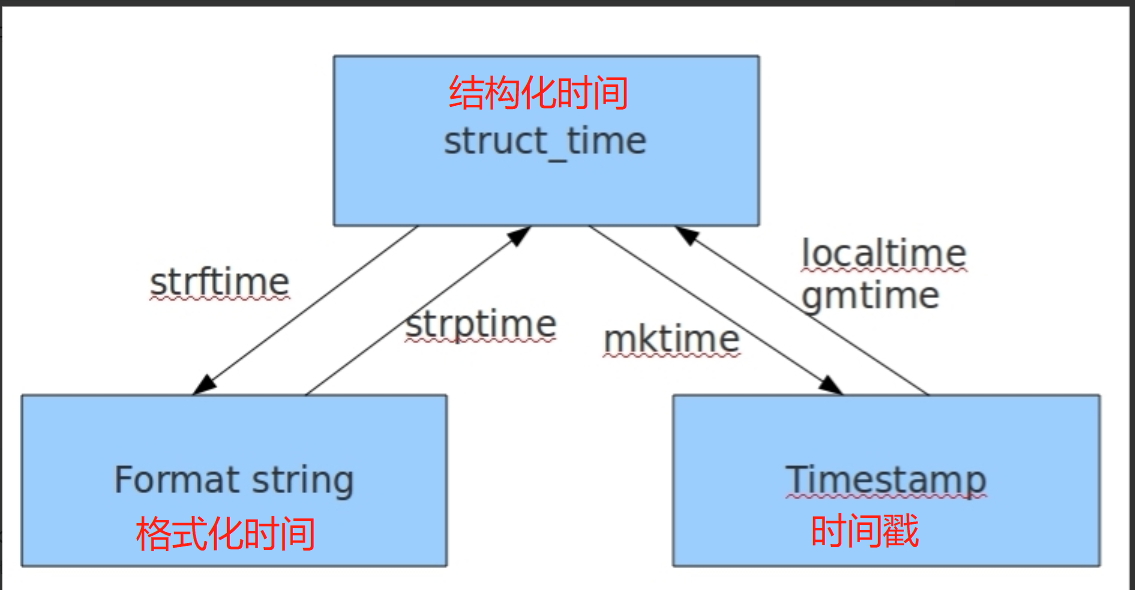python的内置模块(一)
python内置模块之re模块
1、findall 、search、match
import re # 根据正则匹配除所有符合条件的数据 re.findall('正则表达式','带匹配的文本') res = re.findall('b','eva jason jackson') print(res) # ['a', 'a', 'a'] 结果是一个列表(要么有元素 要么空列表) # 根据正则匹配到一个符合条件的就结束 res = re.search('正则表达式','带匹配的文本') res = re.search('a','eva jason jackson') print(res) # 结果对象 print(res.group()) # 正在的结果 if res: print(res.group()) else: print('不好意思 没有找到') """如果没有符合条件的数据 那么search返回None 并且使用group会直接报错,报错可以通过if判断的方式解决""" # 根据正则从头开始匹配(文本内容必须在开头匹配上) res = re.match('a','abac') print(res) print(res.group()) if res: print(res.group()) else: print('不好意思 没有找到') """如果没有符合条件的数据 那么match返回None 并且使用group会直接报错,报错可以通过if判断的方式解决"""
2、split
import re # 先按'a'分割得到''和'bcd',在对''和'bcd'分别按'b'分割 res = re.split('[ab]','abcd') print(res) # ['', '', 'cd']
3、sub、subn
import re # sub类似于字符串类型的replace方法 res = re.sub('\d','H','eva3jason4yuan4',1) # 替换正则匹配到的内容 res = re.sub('\d','H','eva3jason4yuan4') # 不写默认替换所有 print(res) # evaHjason4yuan4 # subn 返回元组 并提示替换了几处 res = re.subn('\d','H','eva3jason4yuan4',1) print(res) # ('evaHjason4yuan4', 1) res = re.subn('\d','H','eva3jason4yuan4') print(res) # ('evaHjasonHyuanH', 3)
4、compile
# # 常用 类似于定义一个函数其他地方可以使用 import re regexp_obj = re.compile('\d+') res = regexp_obj.search('absd213j1hjj213jk') res1 = regexp_obj.match('123hhkj2h1j3123') res2 = regexp_obj.findall('1213k1j2jhj21j3123hh') print(res,res1,res2)
5、finditer
res = re.finditer('\d+','ashdklah21h23kj12jk3klj112312121kl131') print([i.group() for i in res])
6、分组
# search res = re.search('^[1-9](\d{14})(\d{2}[0-9x])?$','110105199812067023') print(res) print(res.group()) # 110105199812067023 print(res.group(1)) # 10105199812067 print(res.group(2)) # 023 # findall # findall针对分组优先展示 无名分组 res = re.findall("^[1-9]\d{14}(\d{2}[0-9x])?$",'110105199812067023') print(res) # ['023'] # 取消分组优先展示 无名分组 res1 = re.findall("^[1-9](?:\d{14})(?:\d{2}[0-9x])?$",'110105199812067023') print(res1) # 有名分组 res = re.search('^[1-9](?P<xxx>\d{14})(?P<ooo>\d{2}[0-9x])?$','110105199812067023') print(res) print(res.group()) # 110105199812067023 print(res.group(1)) # 10105199812067 无名分组的取值方式(索引取) print(res.group('xxx')) # 10105199812067 print(res.group('ooo')) # 023
python内置模块之collections模块
该模块内部提供了一些高阶的数据类型
1、nametuple(具名元组)
格式
namedtuple('名称',[名字1,名字2,...]) namedtuple('名称','名字1 名字2 ...')
from collections import namedtuple point = namedtuple('坐标', ['x', 'y']) res = point(11, 22) print(res) # 坐标(x=11, y=22) print(res.x) # 11 print(res.y) # 22 point = namedtuple('坐标', 'x y z') res = point(11, 22, 33) print(res) # 坐标(x=11, y=22, z=33) print(res.x) # 11 print(res.y) # 22 print(res.z) # 33
2、队列
import queue # 内置队列模块:FIFO # 初始化队列 q = queue.Queue() # 往队列中添加元素 q.put('first') q.put('second') q.put('third') # 从队列中获取元素 print(q.get()) print(q.get()) print(q.get()) print(q.get()) # 值去没了就会原地等待
3、deque(双端队列)
from collections import deque q = deque([11,22,33]) q.append(44) # 从右边添加 q.appendleft(55) # 从左边添加 print(q.pop()) # 从右边取值 print(q.popleft()) # 从做边取值
4、有序字典
# 普通字典转换
normal_dict = dict([('name', 'jason'), ('pwd', 123), ('hobby', 'study')]) print(normal_dict) {'hobby': 'study', 'pwd': 123, 'name': 'jason'}
# 使用模块 from collections import OrderedDict order_dict = OrderedDict([('name', 'jason'), ('pwd', 123), ('hobby', 'study')])
print(order_dict) OrderedDict([('name', 'jason'), ('pwd', 123), ('hobby', 'study')])
# 用模块添加一个元素(有序) order_dict['xxx'] = 111 order_dict OrderedDict([('name', 'jason'), ('pwd', 123), ('hobby', 'study'), ('xxx', 111)])
# 用普通方式添加一个元素(无序) normal_dict['yyy'] = 222 normal_dict {'hobby': 'study', 'pwd': 123, 'yyy': 222, 'name': 'jason'}
5、默认值字典
from collections import defaultdict values = [11, 22, 33,44,55,66,77,88,99,90] my_dict = defaultdict(list) for value in values: if value>60: my_dict['k1'].append(value) else: my_dict['k2'].append(value) my_dict['k3'].append(111) print(my_dict)
6、计数器
res = 'abcdeabcdabcaba' 统计字符串中每个元素出现的次数 new_dict = {} for i in res: if i not in new_dict: new_dict[i] = 1 else: new_dict[i] += 1 print(new_dict) from collections import Counter # 计数器 ret = Counter(res) print(ret)
python内置模块之time模块
1、时间三种表现形式
时间戳(秒数)
结构化时间(一般给机器看)
格式化时间(一般给人看)
三种时间是可以相互转换的
2、时间戳
time.sleep() 原地阻塞指定的秒数
time.time() 获取时间戳时间
3、格式化时间
print(time.strftime('%Y-%m-%d')) # 2021-11-25 print(time.strftime('%Y-%m-%d %H:%M:%S')) # 2021-11-25 11:48:34 print(time.strftime('%Y-%m-%d %X')) # 2021-11-25 11:48:34
格式化时间字符
%y 两位数的年份表示(00-99) %Y 四位数的年份表示(000-9999) %m 月份(01-12) %d 月内中的一天(0-31) %H 24小时制小时数(0-23) %I 12小时制小时数(01-12) %M 分钟数(00=59) %S 秒(00-59) %a 本地简化星期名称 %A 本地完整星期名称 %b 本地简化的月份名称 %B 本地完整的月份名称 %c 本地相应的日期表示和时间表示 %j 年内的一天(001-366) %p 本地A.M.或P.M.的等价符 %U 一年中的星期数(00-53)星期天为星期的开始 %w 星期(0-6),星期天为星期的开始 %W 一年中的星期数(00-53)星期一为星期的开始 %x 本地相应的日期表示 %X 本地相应的时间表示 %Z 当前时区的名称 %% %号本身
4、结构化时间(struct_time元组共有9个元素共九个元素:(年,月,日,时,分,秒,一年中第几周,一年中第几天等)

print(time.localtime()) time.struct_time( tm_year=2021, tm_mon=11, tm_mday=25, tm_hour=11, tm_min=51, tm_sec=25, tm_wday=3, tm_yday=329, tm_isdst=0)
5、三者之间转换关系

python内置模块之datetime模块
import datetime print(datetime.date.today()) # 2021-11-25 print(datetime.datetime.today()) # 2021-11-25 17:00:00.383893 """date年月日 datetime年月日时分秒 time时分秒(MySQL django后期可以)"""
单独打印
res = datetime.datetime.today() print(res.year) # 2021 print(res.month) # 11 print(res.day) # 25 print(res.weekday()) # 获取星期(weekday星期是0-6) 0表示周一 print(res.isoweekday()) # 获取星期(weekday星期是1-7) 1表示周一
时间差
import datetime ctime = datetime.datetime.today() time_tel = datetime.timedelta(days=3) print(ctime) # 2021-11-25 17:01:31.470390 # print(ctime - time_tel) # 2021-11-22 17:01:31.470390 print(ctime + time_tel) # 2021-11-28 17:02:00.575652
""" 日期对象 = 日期对象 +/- timedelta对象 timedelta对象 = 日期对象 +/- 日期对象 """ ret = ctime + time_tel print(ret - ctime) # 3 days, 0:00:00 print(ctime - ret) # -3 days, 0:00:00






【推荐】国内首个AI IDE,深度理解中文开发场景,立即下载体验Trae
【推荐】编程新体验,更懂你的AI,立即体验豆包MarsCode编程助手
【推荐】抖音旗下AI助手豆包,你的智能百科全书,全免费不限次数
【推荐】轻量又高性能的 SSH 工具 IShell:AI 加持,快人一步
· 10年+ .NET Coder 心语,封装的思维:从隐藏、稳定开始理解其本质意义
· .NET Core 中如何实现缓存的预热?
· 从 HTTP 原因短语缺失研究 HTTP/2 和 HTTP/3 的设计差异
· AI与.NET技术实操系列:向量存储与相似性搜索在 .NET 中的实现
· 基于Microsoft.Extensions.AI核心库实现RAG应用
· TypeScript + Deepseek 打造卜卦网站:技术与玄学的结合
· 阿里巴巴 QwQ-32B真的超越了 DeepSeek R-1吗?
· 【译】Visual Studio 中新的强大生产力特性
· 10年+ .NET Coder 心语 ── 封装的思维:从隐藏、稳定开始理解其本质意义
· 【设计模式】告别冗长if-else语句:使用策略模式优化代码结构